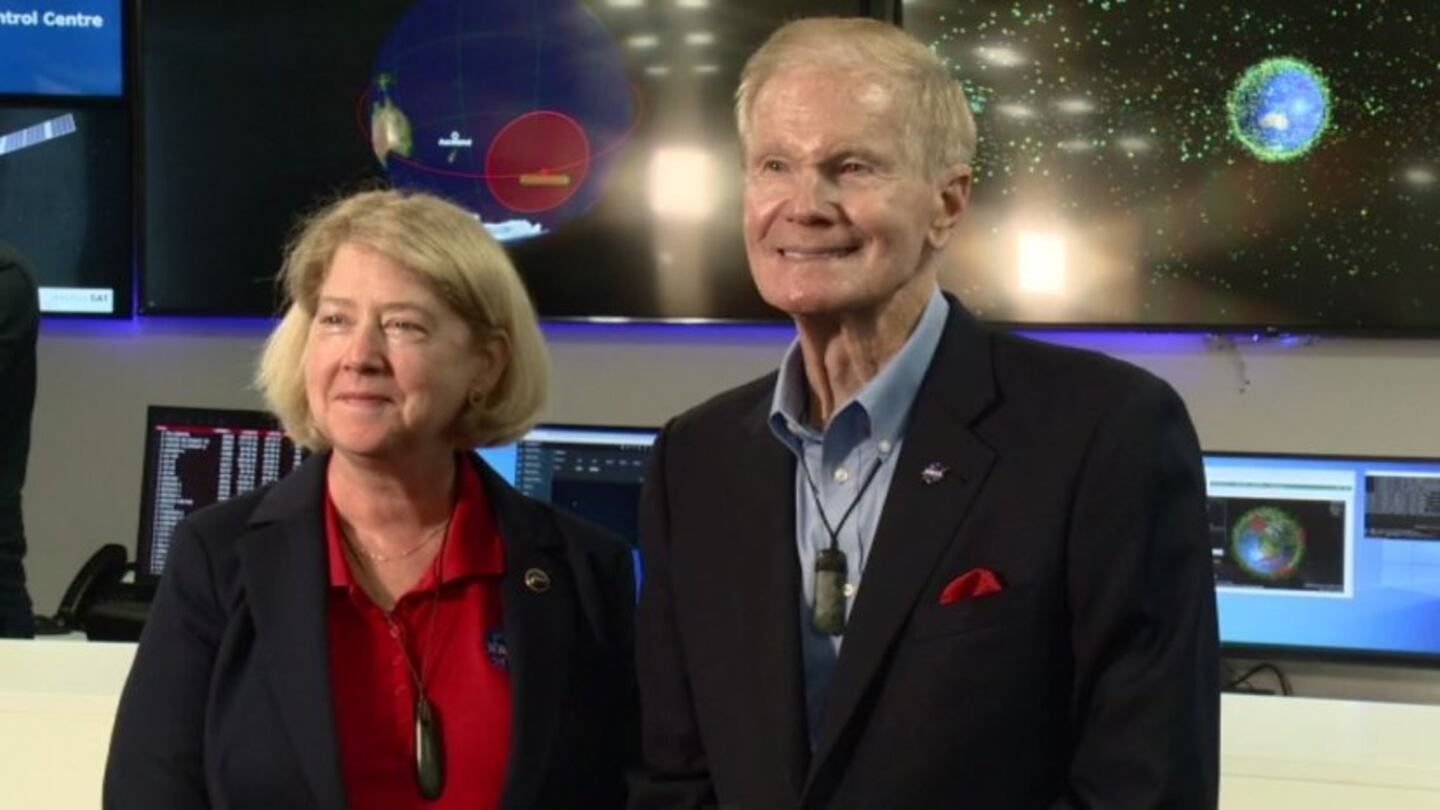Two leaders from the National Aeronautics and Space Administration (NASA) have landed in Tāmaki on a mission to explore the country's booming space research sector.
NASA administrator Senator Bill Nelson is a former astronaut who flew on the 24th flight of the Space Shuttle in 1986 and has served in public office for four decades.
Deputy Administrator Pam Melroy is one of only two women to command a space shuttle. The retired USAF colonel has logged more than 38 days in space on missions to build the International Space Station.
Their visit is expected to boost the collaboration between NASA and New Zealand's space industry, which is worth over $1 billion annually.
They were welcomed onto Waipapa Taumata Rau (Auckland University) yesterday, where they gave a presentation and answered questions from students regarding the growth of the space sector in New Zealand and collaboration efforts with NASA.
NASA makes landfall on Tāmaki Makaurau.
"We've got a spacecraft on the moon to characterise the orbit that our mini space station called Gateway will be in," says Nelson.
"That scientific instrument was launched in a New Zealand cubesat by Rocket Lab, so New Zealand is already a partner of ours."
Additionally, NASA has a program that makes its science and research available to First Nations peoples in the United States to monitor, map and manage their natural resources.
"When we have consultations with indigenous groups, their relationships with nature and resources and protecting resources are going to be really important to us as we go out into the solar system," Melroy says.
Te Kahuratai Moko-Painting (Ngāpuhi) is a student of the Māori lunar calendar and was invited to collaborate with NASA's Native American Advisory Committee in 2021.
"The important thing about these forums is for indigenous peoples to work together and discuss how we can develop relationships with other indigenous peoples and their knowledge.
"As for this visit from Melroya and Nelson, I think it is a great gift for us to listen and get involved with this work, so it is not left to just English scientists," Moko-Painting says.
During their visit, Nelson and Melroy will also meet with Ngāi Tahu to discuss how they can work together combining indigenous and modern science in space research. This meeting is expected to highlight the importance of indigenous knowledge in space exploration.


